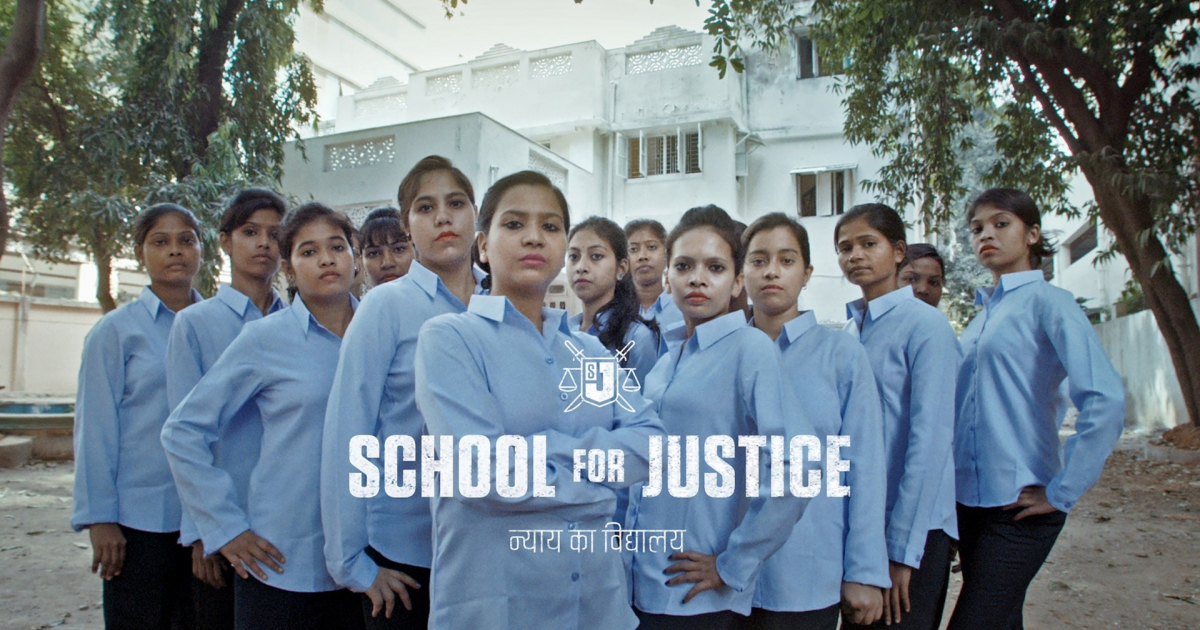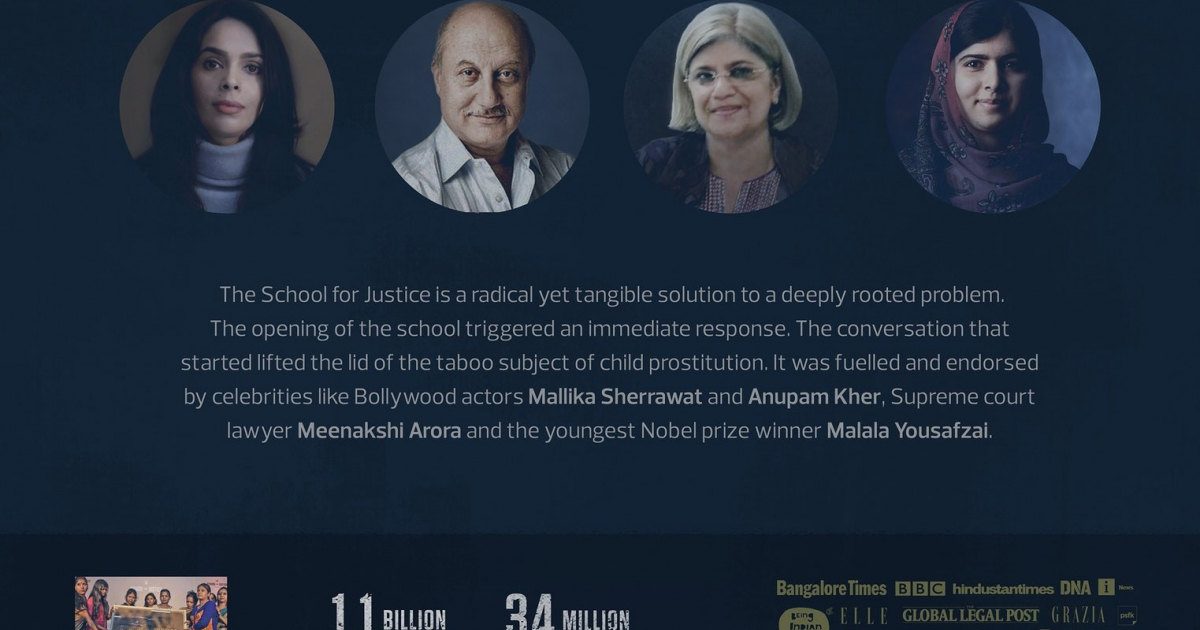School for Justice

A tangible solution to a deeply rooted problem, the school itself is the campaign.
The School for Justice is not only starting a conversation around child prostitution on an epic scale - without traditional media spend – but it’s also fundamentally shifting opinion.
The call to action triggers an immediate response and participation in the short-term; the overall strategy changes perceptions and behaviour in the long-term.
A PR & social campaign highlights the injustice around child prostitution in the short-term; but also empowers the victims, turning them into heroes in the long-term.
A highly effective awareness campaign in the short term; it will change India’s legal system in the long-term.
As a social innovation, it goes against the grain of Indian society. To put it bluntly: these girls aren’t meant to get a higher education, let alone become lawyers or prosecutors. But it’s working.
- 34M+ local reach
- 1.1G social media reach
- High levels of engagement (up to 28%)
- Right local audience is being reached; 91% of the Facebook fans are Indian
- 70% of those who joined the conversation are male
- 2 new schools planned in other countries
Of course, it will be a true success when the first girls are public prosecutors and the criminals who once owned them behind bars.
The solution is the School for Justice. Both a physical school and an education programme, the world’s first School for Justice takes the victims of sex trafficking out of prostitution and into prosecution.
Working with one of India’s most respected law universities, the school trains girls rescued from child prostitution to become public prosecutors with the power to challenge India’s legal system from within. And ultimately prosecute the criminals who once owned them.
Thus, turning the hunt for the lawyers, prosecutors and judges with the right knowledge of human trafficking and child prostitution – and the will to change the system – into the narrative of the campaign.
INSIGHTS
We started by analyzing local data looking for cultural insights and discovered many social and cultural factors in the background. Most girls who end in prostitution come from ethnic minorities and lower castes. The gender imbalance is severe in parts of Indian society: girls are seen as an economic burden and boys a source of income.
Also, the subject of child prostitution is taboo. The girls are stigmatized and ostracized from society and considered ‘complicit’ to this crime.
Newspapers generally play dumb, as journalists are discouraged to cover the topic due to editorial policy, views of their readership and institutionalized corruption.
However, what stood out was a tangible source of the problem: the justice system.
Despite the amount of underage girls in prostitution, the number of prosecutions is incredibly low. In 2015 only 55 legal cases led to convictions – that’s 1.2 million girls in forced prostitution vs. 55 cases. Also due to a lack of good lawyers with in-depth knowledge of the subject.
It was clear that something more fundamental than advertising was needed.
A nation as big and diverse as India wouldn’t be moved by one awareness campaign. Also criticizing Indian culture, especially as a western group, would be counterproductive.
The creative brief was to come up with an idea that would both create awareness and help break the cycle in the justice system around child prostitution.
A solution, not a campaign. One that was grassroots, proactive and interesting enough to spread through India organically - and controversial enough to make journalists take note.
India has the most underage girls in prostitution in the world with an estimated 1.2 million children forced to work in brothels. These girls, some as young as seven, are abducted, sold to traffickers and often tortured.
Poverty, the gender imbalance, the caste system are major driving factors leading to the current situation. Child prostitution is taboo in India, so there is little awareness of this problem. People either don’t know – or look the other way.
NGO Free a Girl is an international organisation dedicated to freeing young girls from forced prostitution and providing them with shelter. In the last years the organisation has contributed to the liberation of thousands of girls from brothels in India, and supported their rehabilitation and reintegration into society.
Free a Girl is doing amazing work in India, but for every girl they rescue from the brothels, another one gets brought back in – by force. An inhumane cycle that must be broken.
The brief to the agency was to create an awareness campaign with the purpose of making India – and specifically India’s men - think differently about the issue of child prostitution and the impunity surrounding it.
Our challenge was to employ the right tactics to get the subject discussed, then embraced to ultimately change opinions and perceptions around the victims of child prostitution.
The success of the campaign could be measured by the amount of on- and offline reach and engagement of the local audience in India. Leading to a change in attitudes, and in the long run a slow shift in the cycle around child prostitution in India.
